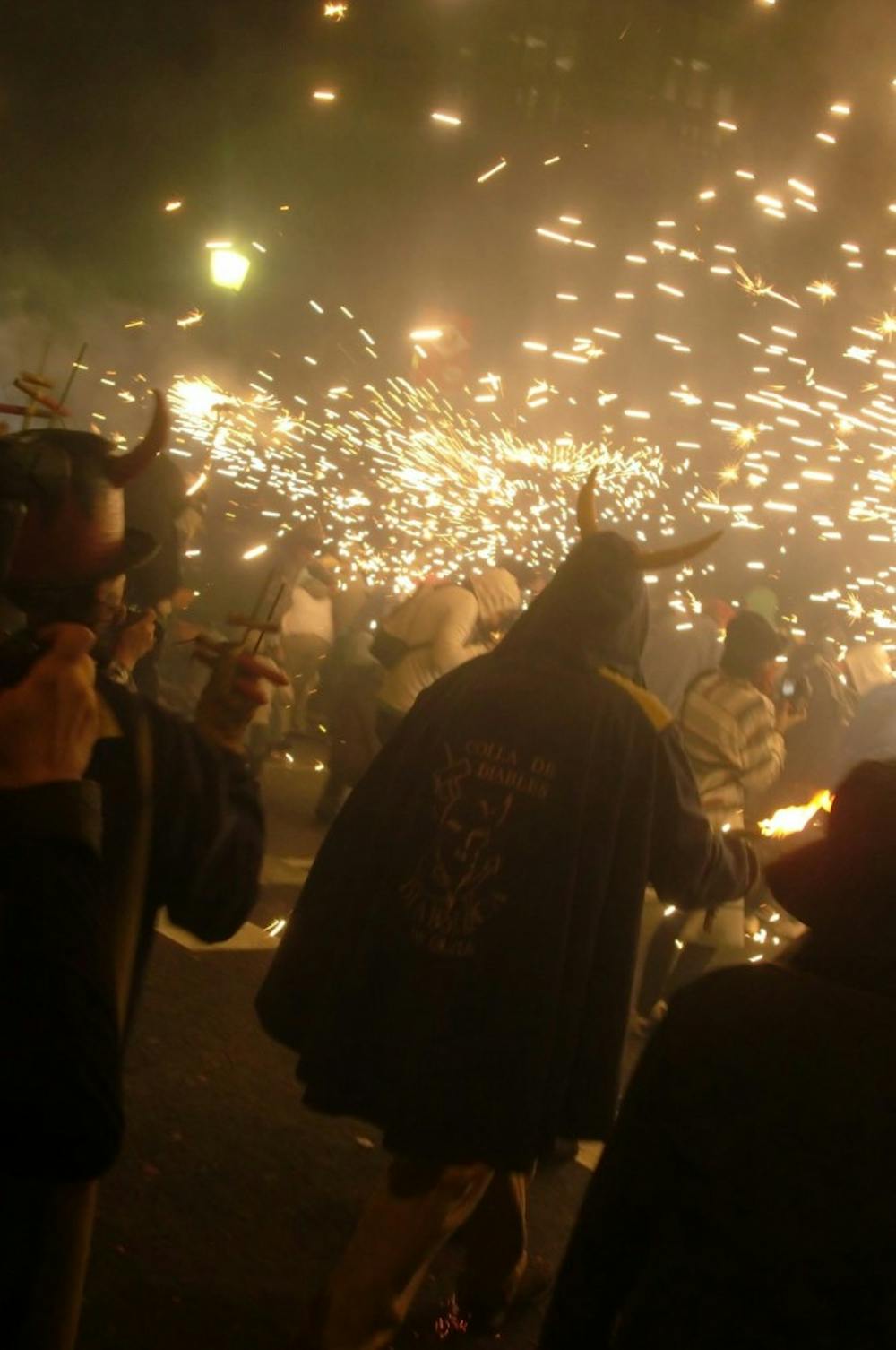BARCELONA - Spain has been combating an economic recession and a 25 percent unemployment rate the past four years, and the end is nowhere in sight.
Weekly transportation strikes and marches protesting high tax rates have erupted across the country.
On September 25, 6,000 protestors stormed the Spanish Parliament in Madrid demanding for an end to austerity measures and for the resignation of Spain’s central conservative government. What started as a peaceful demonstration ended with flying fists and rubber bullets, 35 arrested and 67 injured, including 27 police officers, according to el Periodico. The following day, Prime Minister Mariano Rajoy told The Wall Street Journal: “I can assure you 100 percent that I would ask for a bailout” if borrowing costs remained “too high for too long,” further fueling the already ignited fury across the country.
But the angst and aggression subsided for a weekend. Between Sept. 21 and 24, protest signs were set aside, shop windows were closed and people flooded Barcelona to celebrate their most infamous festival, La Merce.
The festival marks the end of summer and celebrates Barcelona’s patron saint, Our Lady of Mercy. With more than 500 activities including circuses, carnivals, concerts, parades and performances, people of all ages are drawn to the 18 city centers across Barcelona for the three-day long commemoration.
Unlike many American cities that forewent fireworks because of a similar budget cuts because of the recession, La Merce remained just as grand as past years.
Three days of constant events that simultaneously take place in different neighborhoods of Barcelona can get pricey fast. The most iconic and expensive activities of La Merce include the Castellers, teams of people who stand on top of one another up to 10 stories high for competition, jazz and electronic music concerts, dance performances, traditional firework shows and el Correfoc. El Correfoc, the most unique event during the festival, invites the public to run through the city streets with people that are dressed as devils and twirl fireworks. The explosive run, which symbolizes the chasing of the devils out of the city, uses approximately 80,000 fireworks.
Although the festival attracts many sponsors such as Coca Cola, the national newspaper el Periodico and the bottled water company Font Vella, the majority of the funding is from the Catalan government.
Prioritizing festivals like La Merce during the economic crisis has raised a lot of questions among the Catalans. Spain’s budget cuts in education and healthcare are driving its people away from the government. They are united by anger and frustration stemming from higher taxes, salary freezes and steadily increasing unemployment rates. Almost half of the people between 18 and 32 years old are unemployed, even with college educations. Meanwhile, Catalonia is spending millions on big festivals and establishing separate embassies, even though they do the same work as the Spanish embassies.
Many Catalans, although united by the national economic turmoil, are distraught with the allocation of money within Catalonia too. At the same time, many feel these festivals are a vital part of their community and cultural heritage.
“The Barcelona people are very tired and preoccupied with the economy,” Miriam Gazquez, a Spanish teacher at CIEE , the Council on International Educational Exchange, says. “The fiestas are a moment to relax and focus on something else. It makes the people happy. They disconnect from their struggles and enjoy life a little.” She, like many Catalans, believes it is necessary and important to celebrate their heritage, especially in times like this.
It is a chance to celebrate their culture within their communities, but also with the world. Each year, they invite a different city as a guest to their festivities. Past years have included Dakar, Istanbul, Saint Petersburg and Quito. This year, Montreal stepped up to the plate, sponsoring many events and even contributing to the line-up. The Moment Factory, a Montreal-based production company, created a unique light show projected on Gaudi’s La Sagrada Familia. With 16 video projectors, 13 computers and 25 massive moving lights, audiences were dazzled and awed with a15-minute show of psychedelic color transformations and eerie classical and electronic music mixes. The Huffington Post reported that over 32,000 people crowded around the church to see at least one of the 12 showings.
Celebrations during the recession are rationalized by their pride and love for Catalonia. It is their heritage that has united them through the economic crisis. Their love for Catalonia has always been strong, but the recession has intensified many of their desires to distinguish themselves from Spain. On Sept. 11, Catalonia’s National Day, 1.7 million people marched through the streets of Barcelona protesting their separation and independence from Spain, according to el Periodico. This number may only represent a quarter of the Catalan population, but it exemplifies their passionate patriotism. The end of the recession may not be near, but it is this passion that is powering them through.


